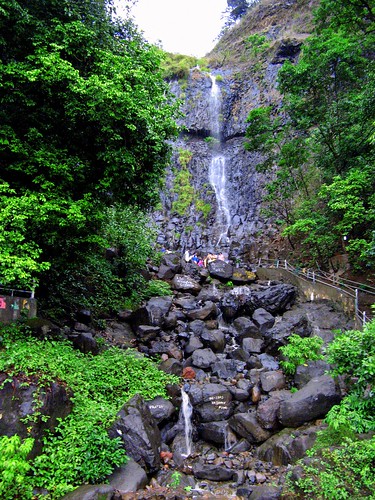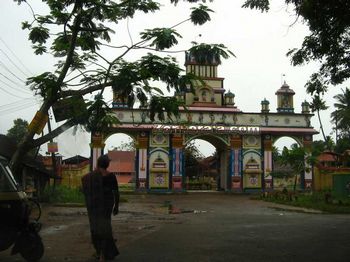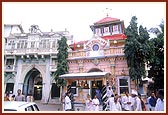
Rainbow's End is a theme park in Auckland, New Zealand that opened in December, 1982. The park, wholly owned subsidiary of New Zealand Experience Ltd, is currently New Zealand's largest theme park. The park currently employs between 50 and 200 staff both full time and part time depending on the time of year. Its main attraction is New Zealands only Corkscrew Roller Coaster.
Rainbow's End Auckland Theme Park Rides
Power Surge – You'll be seated with your feet dangling below you as this intense thrill ride whirls you around in the air, spinning you in many different directions, flipping and twisting you as well as giving you the ultimate sense of freefalling!
Scorpion Karts – 2008 brings something very exciting. We have all new Scorpion Karts. Pure single-seater racing fun!
Dodgems – Our undercover dodgems are a very popular attraction, line up someone you don't like the look of and crash into them!
Cadbury Land Castle – This are is specially designed for our younger guests with a host or rides to keep them happy. Areas in the castle can be hired for under five birthday parties.
Corkscrew Roller Coaster – New Zealand's only corkscrew coaster. We take you up more than 90 feet in the air, then send you shooting down towards the ground into a complete loop, round a corner at teeth-rattling speed and then into a double corkscrew!
Goldrush – An exciting roller coaster-like ride through our very own abandoned goldmine. Watch out for falling beams, cave-ins, explosions and out of control mine karts!
Log Flumes – The Enchanted Forest log flume is one of our most popular rides, taking you and your friends on a magical ride through a waterfall and deep into the heart of a mountain. Watery twists and turns and hold on for the big plunge at the end of your ride!
Fear Fall – At 18 stories high, the ride takes two cars of four seated riders, each on a controlled ascent to the top of the tower, pause them for a few seconds and then drop them...reaching speeds of 80 kilometres per hour before a patented magnetic braking system brings them gently to the ground!
Family Karts – Show mum and dad what you're made of! Speed through our specially designed course full of twists and turns in these two seater races.
Pirate Ship – Ahoy there me hearties! A rollicking good ride on a galleon from old. For the best ride, sit in the last seats at the bow and stern and lift your arms in the air and your feet off the ground—if you dare!
Bumper Boats – Great fun on a hot day. Tear around the course in the bumper boat of your choice.
Motion Master – An interactive virtual theatre experience not to be missed. This ride has two rows of 12 seated riders watching a large screen. The chairs are hydraulically controlled and move in time to the on-screen action. New in 2008—Motion Master is in 3D now!
Scorpion Karts – 2008 brings something very exciting. We have all new Scorpion Karts. Pure single-seater racing fun!
Dodgems – Our undercover dodgems are a very popular attraction, line up someone you don't like the look of and crash into them!
Cadbury Land Castle – This are is specially designed for our younger guests with a host or rides to keep them happy. Areas in the castle can be hired for under five birthday parties.
Corkscrew Roller Coaster – New Zealand's only corkscrew coaster. We take you up more than 90 feet in the air, then send you shooting down towards the ground into a complete loop, round a corner at teeth-rattling speed and then into a double corkscrew!
Goldrush – An exciting roller coaster-like ride through our very own abandoned goldmine. Watch out for falling beams, cave-ins, explosions and out of control mine karts!
Log Flumes – The Enchanted Forest log flume is one of our most popular rides, taking you and your friends on a magical ride through a waterfall and deep into the heart of a mountain. Watery twists and turns and hold on for the big plunge at the end of your ride!
Fear Fall – At 18 stories high, the ride takes two cars of four seated riders, each on a controlled ascent to the top of the tower, pause them for a few seconds and then drop them...reaching speeds of 80 kilometres per hour before a patented magnetic braking system brings them gently to the ground!
Family Karts – Show mum and dad what you're made of! Speed through our specially designed course full of twists and turns in these two seater races.
Pirate Ship – Ahoy there me hearties! A rollicking good ride on a galleon from old. For the best ride, sit in the last seats at the bow and stern and lift your arms in the air and your feet off the ground—if you dare!
Bumper Boats – Great fun on a hot day. Tear around the course in the bumper boat of your choice.
Motion Master – An interactive virtual theatre experience not to be missed. This ride has two rows of 12 seated riders watching a large screen. The chairs are hydraulically controlled and move in time to the on-screen action. New in 2008—Motion Master is in 3D now!
Rainbow's End Cuisine
We have a great range of meal options for your function. A mouth-watering selection of traditional theme park fare is available throughout the park from a number of outlets, everything from candy floss to hot dogs and hamburgers.
Rainbow's End Business Facilities
Put some serious oomph into your next conference! Conventional meeting rooms as well as the distinctive Golf Harbour Conference Village complex.
We can cater for groups between six and sixty and our packages are tailor-made incorporating all your day's needs including rides and refreshments. Did you know, you can also hire the park for an exclusive night function for your team (minimum attendance 150 people).
For further information about our Auckland attraction, please contact us or visit our Auckland theme park Web site.
We have a great range of meal options for your function. A mouth-watering selection of traditional theme park fare is available throughout the park from a number of outlets, everything from candy floss to hot dogs and hamburgers.
Rainbow's End Business Facilities
Put some serious oomph into your next conference! Conventional meeting rooms as well as the distinctive Golf Harbour Conference Village complex.
We can cater for groups between six and sixty and our packages are tailor-made incorporating all your day's needs including rides and refreshments. Did you know, you can also hire the park for an exclusive night function for your team (minimum attendance 150 people).
For further information about our Auckland attraction, please contact us or visit our Auckland theme park Web site.






























































